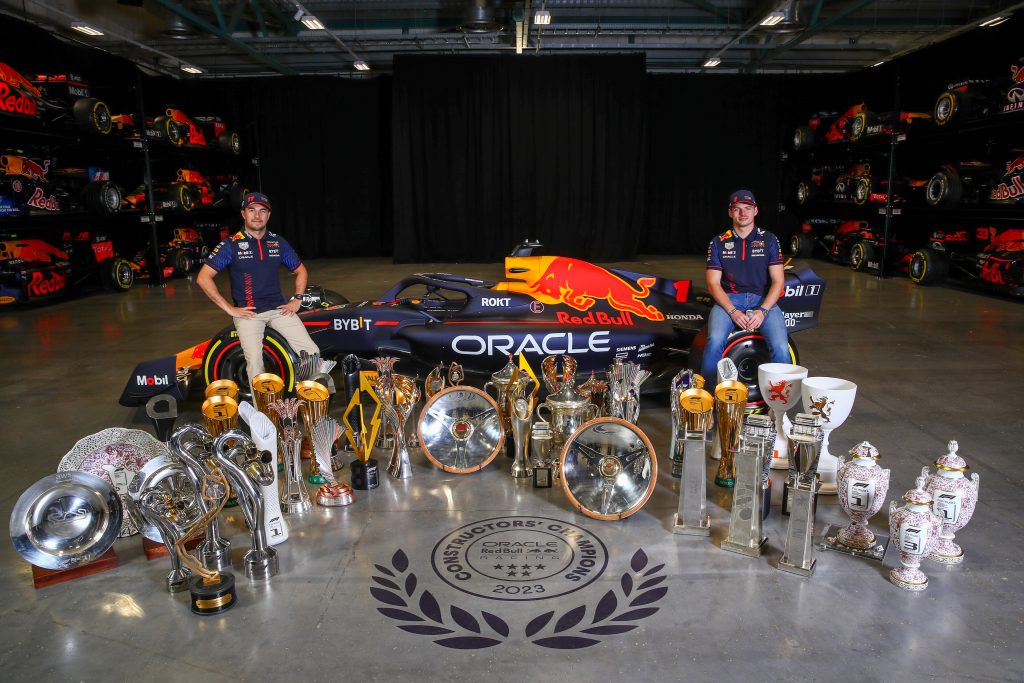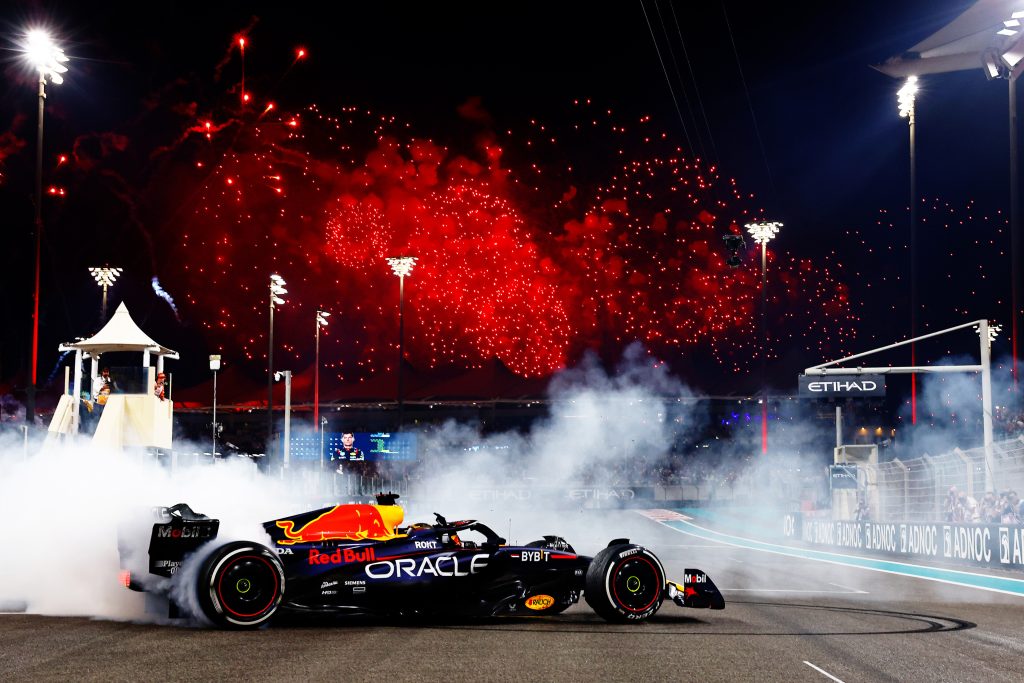3D Printing Industry had the opportunity to ask Red Bull’s Ian Handscombe how the company uses 3D printing in Formula One and how advanced manufacturing gives the team competing as Oracle Red Bull Racing the winning edge. “I don’t think we will continue to be on track unless we embrace [3D printing],” he said, underscoring the importance of additive technology. Handscombe, Head of Quality Engineering at Red Bull Racing, has three decades of experience in the automotive industry and fascinating insights into both the sport and the “fastest growing technology” within F1.
An instrumental part of Oracle Red Bull Racing’s success, Handscombe explained, is due to the transformative effects of their technical partnerships, particularly with companies like Hexagon. “We couldn’t do it without the expert support we get from our partners,” he acknowledged. With them, Red Bull has been able to integrate advanced technologies into their operations, pushing the limits of performance while maintaining the safety and reliability of their racing cars.
While recounting his experiences, Handscombe painted a vivid picture of Formula One in 2023 – a demanding circuit spanning 22 races, five continents, and nine months of the year. From the technical complexities of adapting to varied racing conditions to the logistics of moving an entire team around the globe, the challenges are immense.
Yet, it is the relentless pursuit of innovation and the hunger for victory that drive the Oracle Red Bull Racing team forward. “We are unified by our desire to be the best and our desire to win,” Handscombe professed. From optimizing the car for the fastest track on the calendar to adjusting for the twisty streets of Monaco, where downforce is crucial to success, or the focus on cooling to beat hot and humid conditions in Singapore, the team’s constant strive for perfection has been pivotal to their success.
Handscombe also offered some intriguing insights into the popularity of the sport. “F1 attracts a global fan base of 530 million. It’s more than the Champions League in the UK and more than the NFL. Only the World Cup and the Olympics outdo us,” he stated, drawing attention to the sport’s immense global appeal.
On the topic of the Red Bull Ford Powertrains program, Handscombe discussed Red Bull’s fast-paced technology developments and the firm’s expansion into e-sports, alongside the production of a £5 million two-seater hypercar, “This is a car with all that Formula One technology built in,” he explained. Production of the RB17 at the Red Bull Technology Campus in Milton Keynes, UK, is slated for 2025. Only fifty of these pricey beasts will be manufactured, making each a prized possession.
Handscombe offered valuable insights into the challenges and opportunities of growth that are applicable to any high-performing team. “Growing up fast,” he says, “It’s a real challenge to try to keep that DNA that we built and to try and keep that team spirit.” His remarks underscore the paradox faced by any growing team: sustaining their pioneering spirit while adapting to new scales and scopes.
The magnitude of Red Bull’s ambitions becomes even clearer. Handscombe describes a daring venture: the development of their very own powertrain business. “In the end, we thought, why not? Why not take destiny into our own hands and control our future.” This audacious project aims to design, manufacture, build, and test all engine-related activities from 2026 onwards, with the goal of winning more races and championships. But such bold moves are not without their obstacles. “This is a pretty ambitious project even for Red Bull,” admitted Handscombe. The in-house engine project is a major milestone in the team’s evolution. Red Bull cars have been powered by Ferrari, Renault, and, since 2019, Honda.
According to Handscombe, Hexagon has been instrumental in determining what equipment Oracle Red Bull Racing needed, helping deliver it, assisting in the development, and providing training. Handscombe elucidates, “For this venture, Hexagon has been with us every step of the way.” This reflects Red Bull’s strategy of leveraging the expertise and innovation of its partners to drive its own advancements.
The manufacturing side of Red Bull’s racing endeavor is no less impressive. “We make in the region of a quarter million parts for every year,” he said. The company not only produces parts for its own team but also for the AlphaTauri team, as they are currently known. This process of continuous optimization is central to Red Bull’s ethos of iterative development, facilitated by extensive data collection and feedback. “We gather data from every one of the races, producing approximately 400 gigabytes of data from every race,” Handscombe added. The collection and analysis of this data are vital in maintaining their competitive edge, allowing them to adapt faster than their competition.
And by the stats, it’s working. The team won 21 out of 22 races during the 2023 season, and won 17 races of the previous season.

What are the key trends in 3D printing to watch for 2024?
Quality is key
Quality is key to Red Bull’s philosophy, according to their representative, and is to “manufacture as much as possible in-house.” This ethos underpins the construction of the 250,000+ bespoke parts for their F1 vehicles. But as he notes, this internal commitment isn’t without its challenges in an environment constrained by budget caps: “It’s certainly an uphill battle. But we are where we are. And we have to conform to the regulations.” To meet these demands without sacrificing quality, the company turned its focus to quality assurance, moving away from a reactive quality control model. This required integrating stringent checks into every step of the process, from concept to production. He elaborated: “We have to make sure every step of the process passes right, and we’re talking all the way to the endpoint as well.”
This integration brought new technologies and strategies into their manufacturing and testing process. For instance, Oracle Red Bull Racing has employed tools from Hexagon’s portfolio to significantly reduce setup and run time. They’ve also been exploring scanning technologies from other Hexagon acquisitions, demonstrating a willingness to consider novel solutions to improve efficiency.
Moreover, Red Bull’s innovations are not limited to the factory floor. Their technology travels with the racing team as well. “In 2011, we were the first F1 team to bring a scanner to the track”, said Handscombe. This piece of technology was initially used as a diagnostic tool but has since evolved into a crucial part of Red Bull’s trackside operations.
As a sign of the times, the company now relies on Hexagon’s 24/7 global technical support to sustain its global racing operations. In a moment of technological camaraderie, a representative from Hexagon in the UK even once shipped replacement parts to the Oracle Red Bull Racing team during a race weekend in Australia.
But Red Bull is not alone in their use of these advanced tech tools. The broader F1 community has also embraced the technology, using Hexagon’s tools for checks and balances in ensuring that all components adhere to the sport’s stringent regulations.

3D printing at Red Bull Racing
I asked Handscombe about the use of additive manufacturing or industrial 3D printing at Red Bull Technology Campus. He confirmed its use within the Oracle Red Bull Racing team, calling it “the fastest-growing technology” within Formula One circles. The team is currently conducting a comprehensive survey of the industry landscape to determine what is currently available and what stands as the best. “That’s not to say we don’t use it today,” said Handscombe, “we use it an awful lot.” What is set to change is a move from the 3D printed scale models to test aerodynamics in wind tunnels to “more and more” 3D printed components on the race car. “I think 3D printing will start to replace mechanical parts on the car soon,” he said.
The speed of the design cycle in this industry is impressively rapid. Handscombe revealed, “After one race, we can design and actually have a part on the car for the next race.” The implementation of the budget cap has, however, slowed this process and led to reductions in personnel to comply with financial restrictions.
While the team spends much of its time focusing on the car and its improvements, Handscombe acknowledged the essential role of the driver. “We need the best drivers, and they don’t come cheap,” he said. “It’s not just about the car; it’s about who drives the car too.” In addition to the drivers, the company values its technology partners who help them reduce costs and increase performance.
To underline the importance of continuous improvement, Handscombe gave a candid account of the team’s cultural transformation. When he joined in 2014, Handscombe, together with his colleagues, launched a continuous improvement program that helped change the team’s culture, focusing on maintaining a rigorous process of quality checks and controls.
The major regulatory changes coming to Formula One were a key point of discussion. According to Handscombe, the changes could be quite dramatic, particularly with the restrictions being introduced. He expressed personal concerns that the budget cap might inhibit technological advancement despite the increasing popularity of the sport and the resulting financial influx. “We’re allowed to spend less, we have to make tough choices as to what we do. You have to be very, very careful… it could slow down and stifle technology,” he cautioned.
The Oracle Red Bull Racing team, like the industry itself, stands at the crossroads of tradition and innovation as the winds of change begin to blow.
Discover insights from leaders in the 3D printing industry.
Subscribe to the 3D Printing Industry newsletter.
You can also follow us on Twitter, like our Facebook page, and subscribe to the 3D Printing Industry Youtube channel to access more exclusive content.
Are you interested in working in the additive manufacturing industry? Visit 3D Printing Jobs to view a selection of available roles and kickstart your career.
The featured image shows the Red Bull Racing Crew posing for a photo during the Red Bull Racing 2023 Pitch Black Pit Stop in Milton Keynes, England. Photo via Magenta Stills / Red Bull Content.



